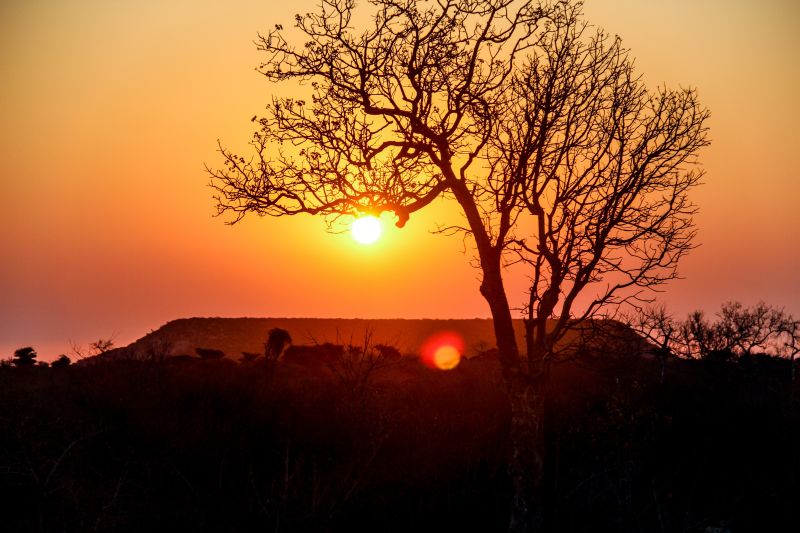
Better Cotton is meeting the climate crisis head on. Along with our extensive network of partners and members, we are working to make cotton farming more climate-resilient and sustainable, whilst protecting the livelihoods of farming communities.
According to the World Resources Institute (WRI), the agriculture sector accounts for nearly as much of world’s greenhouse gas emissions (12%) as the transportation sector (14%). Reducing the amount of greenhouse gases (GHG) in our atmosphere is essential to limit the impacts of climate change. Agriculture has a key role to play in this as forests and soil store large quantities of atmospheric carbon.
Better Cotton has a responsibility and opportunity to help shift the cotton sector to become part of the climate solution, while supporting those most affected by climate change. Our 2030 Strategy lays the foundation for a strong response to climate threats within the cotton value chain, and mobilises action for change with farmers, field partners and members. Our Climate Approach sets out our specific ambitions in this area and our initial actions to achieve them.
2030 Target
By 2030, we aim to reduce greenhouse gas emissions per tonne of Better Cotton lint produced by 50% from the 2017 baseline.
Our goal is to help farmers substantially reduce their greenhouse gas emissions while increasing their crop quality and yields through good soil health and farming practices that capture carbon into soil.
In pursuing a better future for all, the Climate Change Mitigation target will support farmers as they reduce their greenhouse gas emissions associated with growing cotton. This will be helped, in part, by the work in our other Impact Target areas, which aim to reduce GHG emissions from soil management practices and the use of synthetic fertilisers. Reducing GHG emissions from Better Cotton production will contribute to global climate efforts and help improve farmer livelihoods.
Our Climate Approach
Better Cotton’s Climate Approach is informed by a growing body of research on the intersection between cotton farming and climate change, the work of the Intergovernmental Panel on Climate Change (IPCC) and is aligned with the Paris Agreement.
It is composed of three pillars:
- Reducing cotton production’s contribution to climate change: Accelerate the transition of Better Cotton farmers toward climate-smart and regenerative agricultural practices that reduce emissions and sequester carbon
- Adapting to life in a changing climate: Equipping farmers, farm workers and farming communities to be more resilient to climate change impacts
- Enabling a just transition: Ensuring that the shift towards climate-smart, regenerative farming and resilient communities is socially and economically inclusive
Each of the pillars offer productivity and yield improvement opportunities and many of the practices that we promote support both mitigation and adaptation all of which is fundamental to the production of sustainable cotton.

How Cotton Production Impacts Greenhouse Gas Emissions
As one of the world’s largest crops, cotton production contributes to GHG emissions. Cotton production contributes to climate change by emitting greenhouse gases, some of which can be avoided or reduced:
- Poor management of nitrogen-based fertilisers can generate considerable amounts of nitrous oxide emissions, in addition to the GHG emissions associated with the production of fertilisers and pesticides.
- Water irrigation systems used in cotton production can be significant drivers of GHG emissions in certain areas where water must be pumped and moved across long distances or where the electricity grid operates on high-emitting power sources like coal.
- Forests, wetlands and grasslands converted for cotton production can eliminate natural vegetation that store carbon.
Climate Change in the Better Cotton Principles and Criteria
Climate change is a cross-cutting theme in the Better Cotton Principles & Criteria (P&C). The farm practices promoted by the P&C have helped Better Cotton lay strong foundations to mitigate climate change and support adaptation at farm level.
Principle 1: Better Cotton Farmers minimise the harmful impact of crop protection practices. We support farmers to to reduce the reliance on conventional, synthetic pesticides. Better Cotton also helps farmers phase out the use of Highly Hazardous Pesticides, which pose great risks to both the environment and the health of farming communities and workers.
Principle 2: Better Cotton Farmers practice water stewardship. We support farmers to use water in a way that is environmentally sustainable, economically beneficial, and socially equitable. This water stewardship approach can strengthen resilience to climate change and minimise negative impacts on water quality.
Principle 3: Better Cotton Farmers care for the health of the soil. Healthy soil reduces the need for expensive fertilisers and pesticides, and can more easily withstand unpredictable weather patterns caused by climate change. We support farmers to optimise fertiliser application, or use natural alternatives, as in many countries synthetic nitrogen fertiliser is a primary driver of emissions. Healthy soil also helps to mitigate climate change, as it is better able to sequester carbon and serve as a carbon sink.
Principle 4: Better Cotton Farmers enhance biodiversity and use land responsibly. We support farmers in conserving and enhancing biodiversity on their land and in adopting practices that minimise the negative impact on habitats in and around their farm.

Learn more
- About the Better Cotton Principles and Criteria
- Better Cotton’s Climate Approach
- What climate action means to the attendees of the Better Cotton Conference 2022
- Read these stories from the field on Better Cotton climate change mitigation and adaptation practices:


